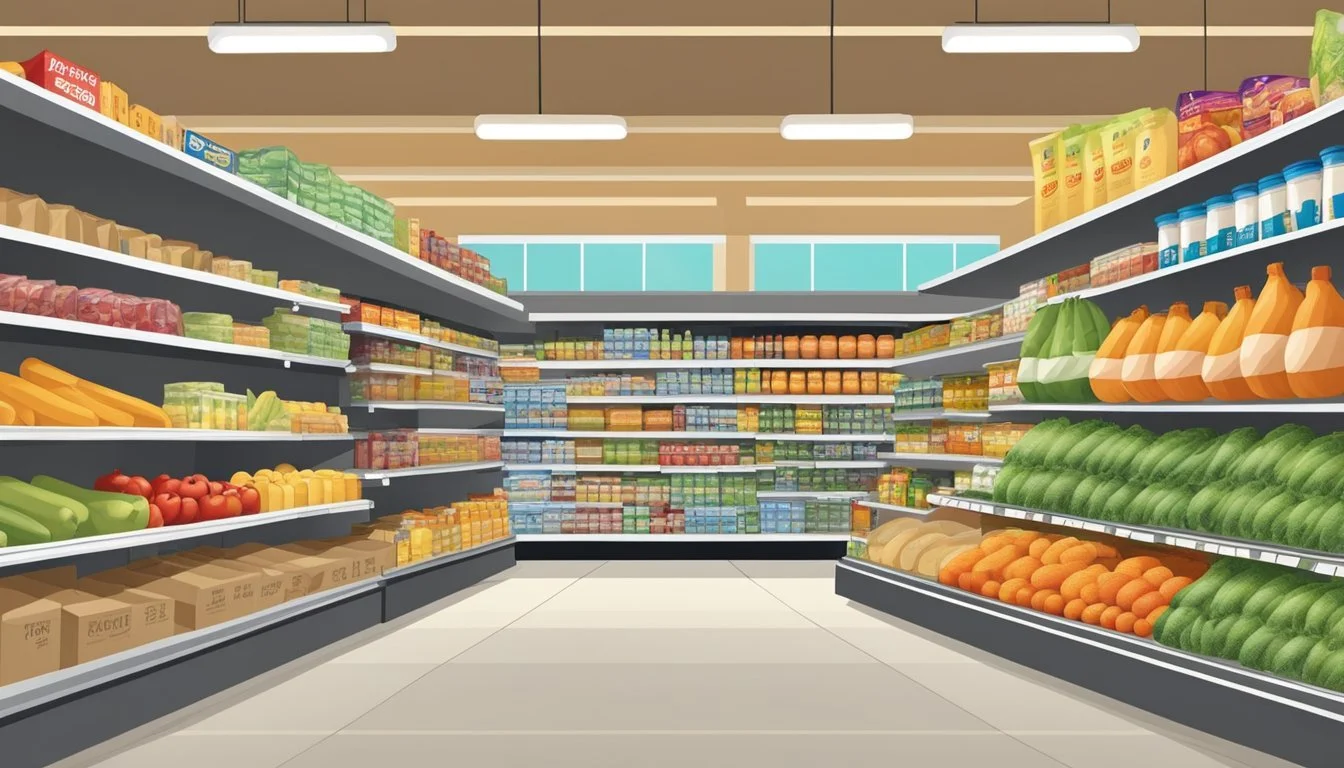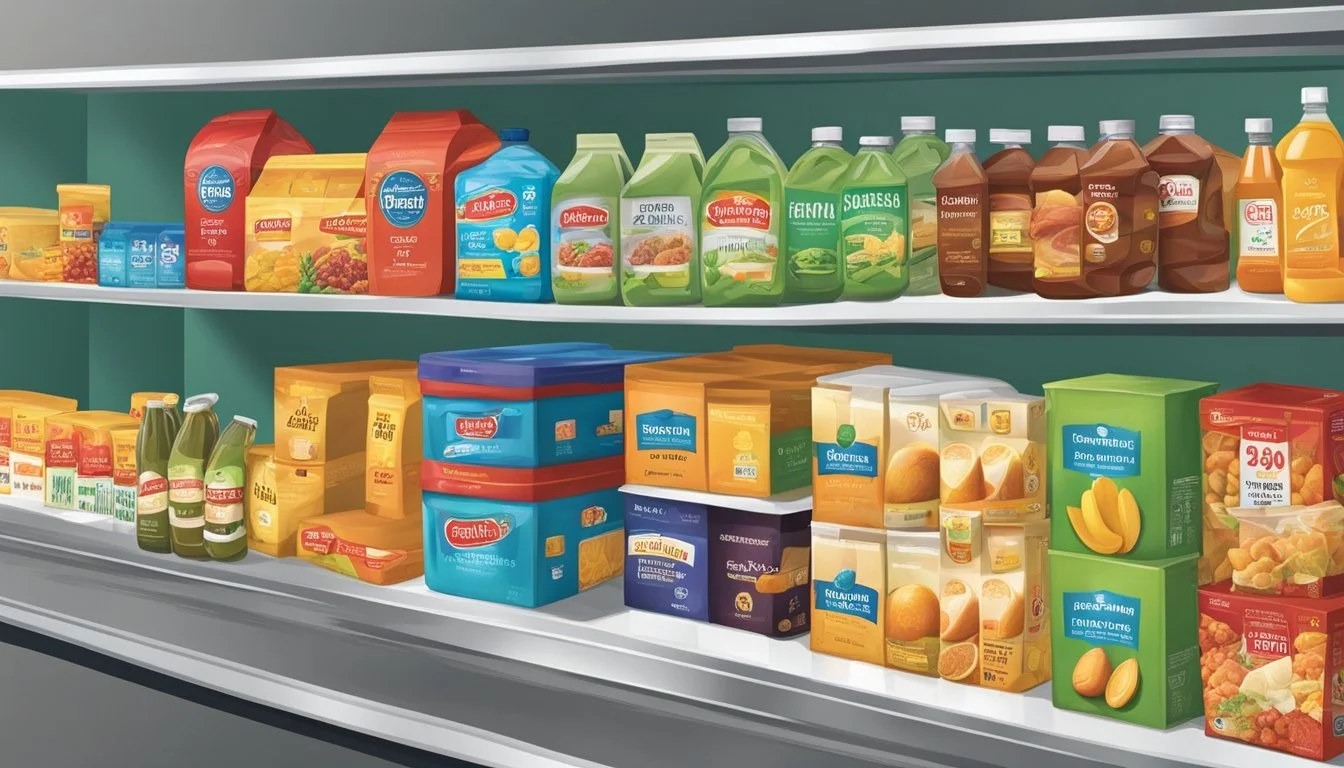Is Safeway Cheaper Than Giant Eagle?
Comparing Grocery Store Prices
Part of Our Grocery Store Guide with Details on Safeway Prices and Giant Eagle Prices
When consumers make decisions about grocery shopping, price is often one of the most important factors. A regular comparison that shoppers might make is between Safeway and Giant, two well-known grocery chains in the United States. While both stores offer a wide variety of food and household products, the overarching question for many budget-conscious buyers is which store offers the best prices.
Recent analyses comparing shopping categories across various supermarkets have put these two giants in direct competition. It has been observed that Giant frequently offers lower prices in the majority of common shopping categories compared to Safeway. This price difference may influence the decision of shoppers looking to stretch their grocery dollars further.
Giant and Safeway cater to similar markets, but their pricing strategies may differ based on their promotions, supplier deals, and consumer demand. This price variation could be seen in specific categories such as dairy where one may outdo the other. As grocery shopping forms a significant part of household expenses, understanding which store can provide the best value can contribute to significant savings over time.
Analysis of Pricing Strategies
In comparing Safeway and Giant Eagle, one must consider various factors that influence the final cost to consumers, from base prices to the impact of private labels.
Comparing Base Prices
When assessing Safeway and Giant Eagle, a detailed price comparison is essential. Typically, base prices of goods at Safeway and Giant Eagle can vary considerably based on location, product type, and brand. For example, Safeway may offer lower prices on dairy products, while Giant Eagle might have more competitive pricing for pantry staples.
Discounts and Sales Tactics
Both Safeway and Giant Eagle employ discounts and sales tactics to attract customers. Safeway often uses loss leaders—products sold at a loss to draw customers into the store—with the expectation that they will save money on other purchases. Giant Eagle may feature sale prices on national brands during key retail seasons to incentivize bulk purchases. Additionally, both may offer special bonus discounts to loyalty card holders.
Impact of Store Brand Products on Prices
Store brand products can significantly lower the grocery bill. Safeway's private labels often offer similar quality to national brands at a reduced cost. Giant Eagle also boasts a wide array of store brands that can help shoppers save money without compromising on quality.
Price Fluctuation and Seasonal Changes
Prices at Safeway and Giant Eagle can fluctuate in response to market trends and seasonal changes. Consumers might find better deals around holidays, such as Valentine’s Day, when stores compete for business. Additionally, both grocery chains may modify their pricing strategies periodically to remain competitive, with sale prices and discounts appearing more frequently during certain times of the year.
Brand and Product Variety
Comparing the brand and product variety between Safeway and Giant Eagle emphasizes their individual approaches to selection and quality, especially in categories like produce, deli items, and organic offerings.
Produce Quality and Selection
Safeway often features a diverse array of fresh produce, including both conventional and high-quality produce. The selection is frequently updated with seasonal items, ensuring customers have access to a wide variety of fruits and vegetables. In contrast, Giant Eagle also boasts a strong commitment to quality in their produce department, with a focus on regional and local products where available.
Meat and Deli Options
Giant Eagle is known for its ample meat and deli options, providing customers with a selection of prepared foods and high-quality meats. Their counters typically offer an assortment of traditional and specialty meats and cheeses. Safeway similarly offers a range of meat and deli products, which includes both premium brands and affordable generic staples, catering to different preferences and budgets.
Availability of Organic and Specialty Items
When it comes to organic produce and specialty items, both Safeway and Giant Eagle place a strong emphasis on availability. Safeway's Organic line and Giant Eagle's Nature's Basket line are examples of their dedication to including organic options throughout the store, from fresh produce to dairy products.
Dairy and Dry Goods Assortment
Both store chains provide a comprehensive assortment of dairy and dry goods. They each have a mix of popular national brands alongside their store brands, with Giant Eagle offering Market District and Safeway featuring the Safeway Signature Select. These store brands often allow for cost savings without sacrificing quality, especially in everyday items such as bread, milk, and dry goods.
Consumer Shopping Experience
The consumer shopping experience at Safeway and Giant Eagle encompasses various aspects including efficiency at checkout, store layout, loyalty programs, and the convenience of grocery pickup and delivery options.
Service and Checkout Efficiency
Customers at both Safeway and Giant Eagle encounter different levels of service and checkout efficiency. Giant Eagle often implements Express Checkout Lanes for small purchases leading to streamlined and quicker transactions. Self-checkout options are available in many locations, providing shoppers with an expedited, self-managed experience.
Store Layout and Shopping Convenience
The layout of a store contributes greatly to the shopping experience. Safeway stores typically have clear signage and organized aisles, which facilitate easier navigation through different sections. Giant Eagle also takes pride in an orderly store layout, with additional emphasis on specialty areas such as the bakery and deli.
Membership and Loyalty Programs
Both supermarkets offer membership and loyalty programs to their customers. Safeway runs the Just for U program, offering personalized deals and discounts based on purchase history. On the other hand, Giant Eagle features a Fuel Perks+ program where shoppers accumulate points for discounts on fuel as well as grocery purchases.
Grocery Delivery and Pickup Options
Grocery delivery and pickup options have become essential for many shoppers. Safeway provides grocery delivery services in partnership with third-party platforms and has a Drive Up & Go option for easy pickup. Giant Eagle offers Curbside Express for pickups, and also partners with delivery services, ensuring customers have multiple ways to receive their groceries.
Comparative Market Analysis
In this analysis, we assess Safeway and Giant Eagle against other supermarket chains, examining prices, customer perceptions, market share, and consumer trends to understand their competitive positions in the marketplace.
Local and National Supermarket Chain Comparison
Safeway and Giant Eagle operate in a competitive space that includes a mix of local and national chains. Walmart and Aldi are recognized for their lower price points, frequently undercutting competitors like Safeway and Giant Eagle. On the other hand, chains such as Wegmans and Whole Foods often feature higher prices, positioning themselves as premium grocers. Target and Harris Teeter appear to strike a balance, offering competitive pricing on a variety of items, while maintaining a focus on a quality shopping experience.
Price Points in Relation to Competitors
When evaluating specific price points, Safeway often falls between the lower-cost leaders, such as Walmart and Aldi, and higher-end supermarkets like Whole Foods. In contrast, Giant Eagle typically positions its pricing competitively with Safeway but occasionally higher, depending on the market basket analysis. Regular surveys of area consumers indicate that Food Lion and Walmart generally provide savings of 10 to 30 percent below the all-store average, potentially offering a better value to cost-conscious shoppers.
Customer Perceptions and Ratings
Customer perceptions play a significant role in shaping the supermarket landscape. Safeway and Giant Eagle both receive above-average ratings from surveyed customers, which reflect the quality of service and product offerings. However, market research points out that customer loyalty can vary significantly with changes in price competitiveness. Supermarkets like Trader Joe’s and Sprouts have built a strong customer base attributed to their unique product selections and customer experience, despite not always being the cheapest option.
Market Share and Consumer Trends
Market share is influenced by price, quality, and consumer trends. Safeway and Giant Eagle hold substantial market shares in their respective regions, but they face intense competition from Walmart, Amazon, and increasingly, Aldi. These competitors leverage their extensive distribution networks to offer lower prices, attracting price-sensitive customers. Trends also show that consumers are increasingly embracing online grocery shopping, a domain where Amazon and Walmart have significant advantages over traditional supermarket chains like Safeway and Giant Eagle.
Cost-Saving Tips for Consumers
In the pursuit of savings on grocery expenses, consumers can employ a variety of strategies. These approaches range from optimizing shopping habits to the careful planning of meals and purchases. Below are focused tactics that can make a tangible difference in the costs of a family's grocery budget.
How to Maximize Savings on Grocery Purchases
When embarking on grocery purchases, consumers should compare prices among different stores. Retailers like Lidl typically offer competitive pricing on products. To go further, looking out for sales, using coupons, and joining store loyalty programs are all methods to save money. An example table for comparing prices of common items across retailers may look something like this:
Item Giant Eagle Safeway Lidl Milk $2.99 $2.79 $2.59 Eggs (dozen) $1.89 $1.99 $1.69 Butter (pound) $3.49 $3.29 $2.99 Cheddar cheese $2.50 $2.30 $2.00
Frozen foods, which tend to have longer shelf lives, can also be a cheap and convenient option for families looking to stock up when the prices are lower.
Creating Effective Grocery Lists and Meal Plans
An effective grocery list and meal plan should align with a family's weekly food schedule, including breakfast, lunch (What wine goes well with lunch?), dinner, and even occasional snacks or a sweet treat. Meal planning reduces the need for expensive, last-minute purchases and helps avoid food waste. Here's an example of how a meal plan could be organized:
Sample Meal Plan for a Week
Monday: Breakfast - Oatmeal; Lunch - Chicken salad; Dinner - Grilled fish with potatoes
Tuesday: Breakfast - Yogurt with fruit; Lunch - Turkey sandwich; Dinner - Stir-fry vegetables
Wednesday: Breakfast - Scrambled eggs; Lunch - Quinoa bowl; Dinner - Beef tacos (What wine goes well with beef tacos?)
Organizing a meal plan and associated grocery list around sales and what's in season can make this approach even more effective.
Understanding When to Buy in Bulk
Buying in bulk at warehouse clubs can be cheaper for groceries, especially for non-perishable items or products with long shelf lives like rice, pasta, and some frozen foods. However, one should check if they have adequate storage and will use the items before their expiration dates to actually save through bulk purchases. Eggs, milk, and sour cream may be more expensive to purchase in bulk if they are not used before spoiling. It's usually a good idea to buy items like potatoes and fruits in smaller quantities unless hosting an event, as they can spoil if not used quickly.
Buying household staples in bulk that are consistently used, like toilet paper or cleaning supplies, can contribute to long-term savings. Families should assess their consumption rates and compare the cost per unit at different retailers to find the best deal, reflecting on whether the savings from bulk purchases are superior to regular-sized options when considering storage and use.







